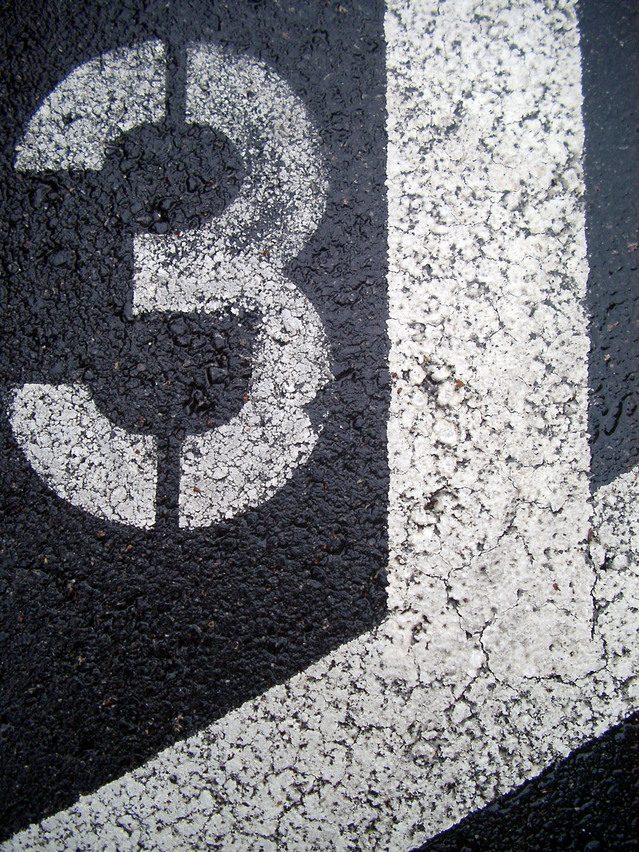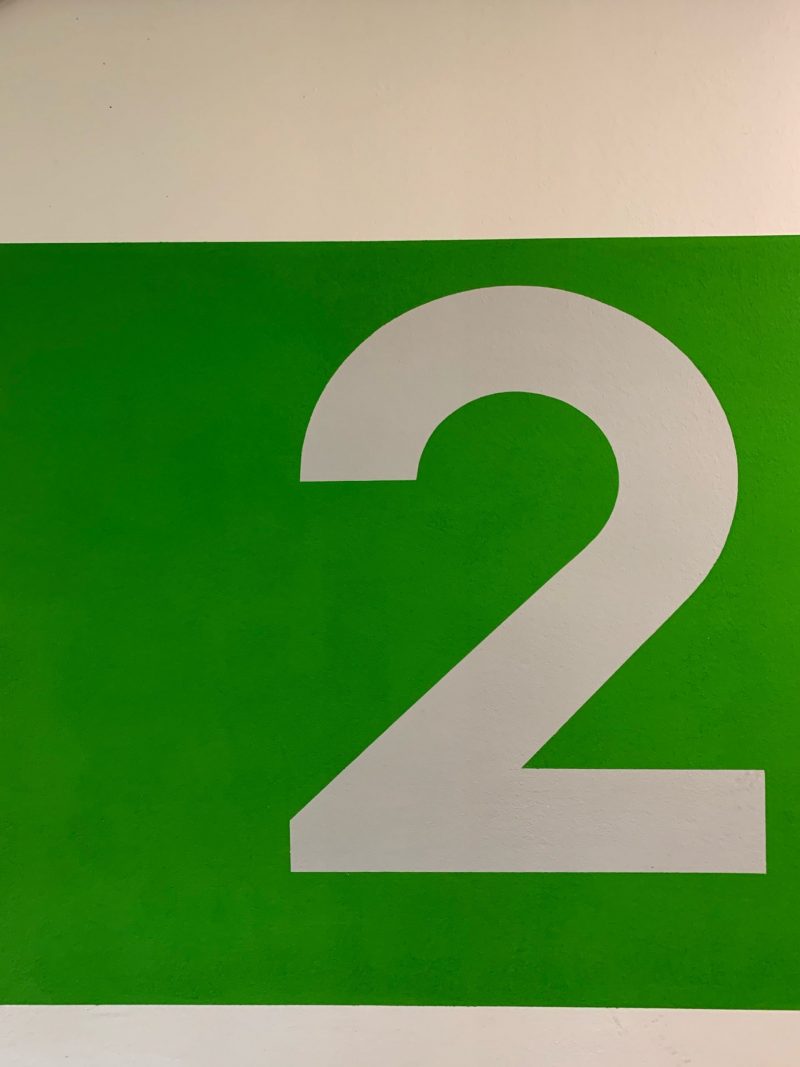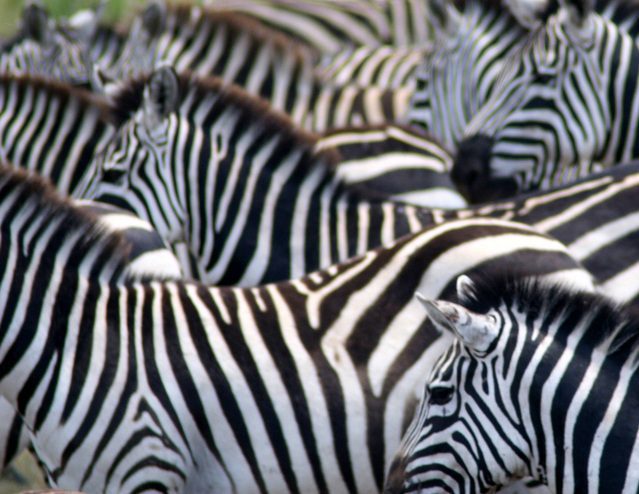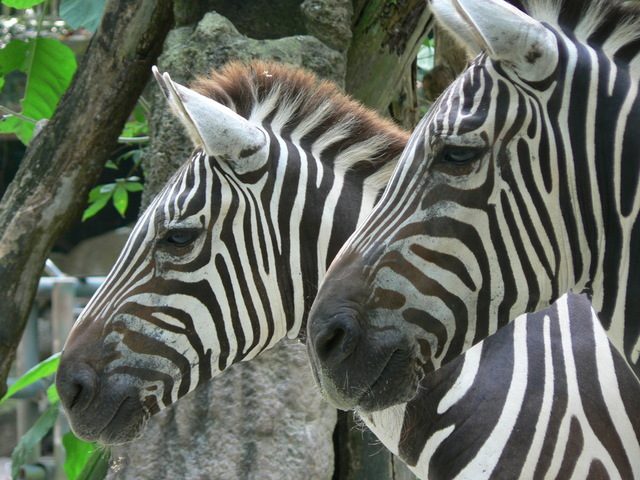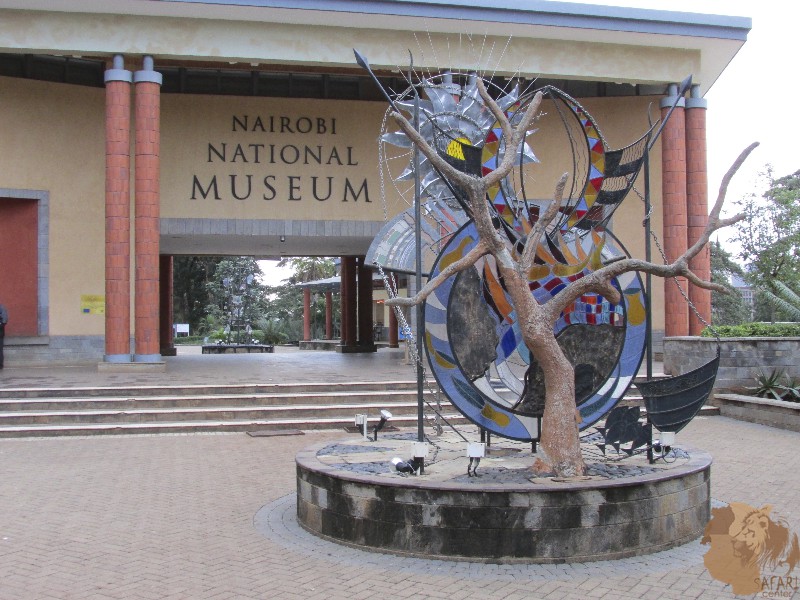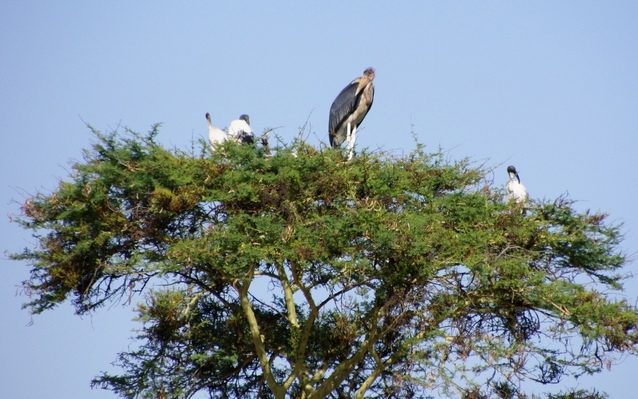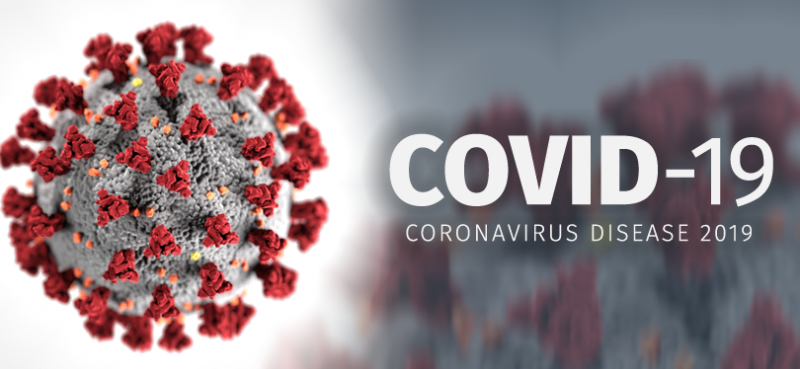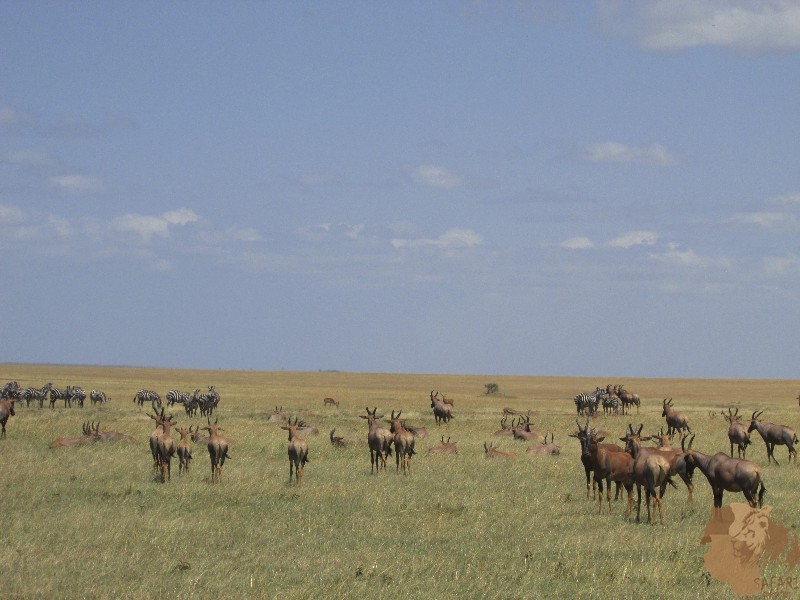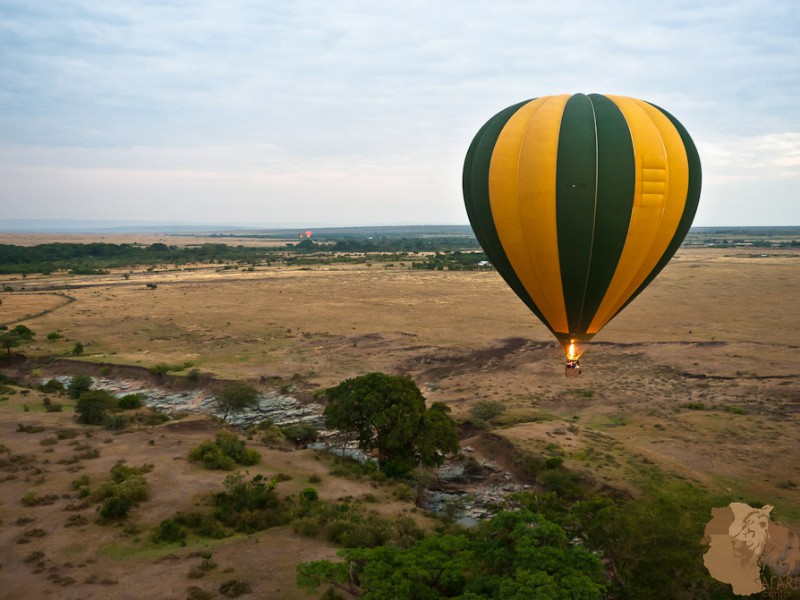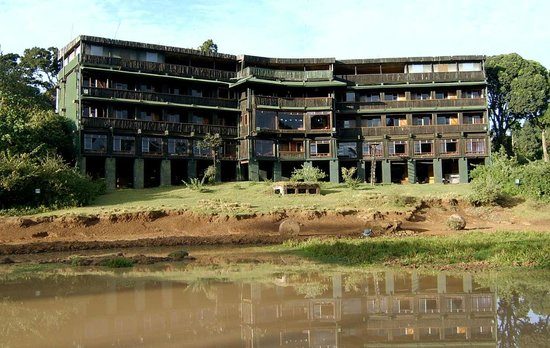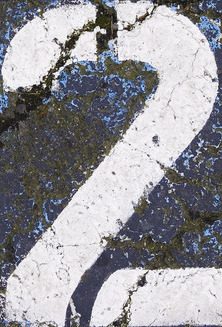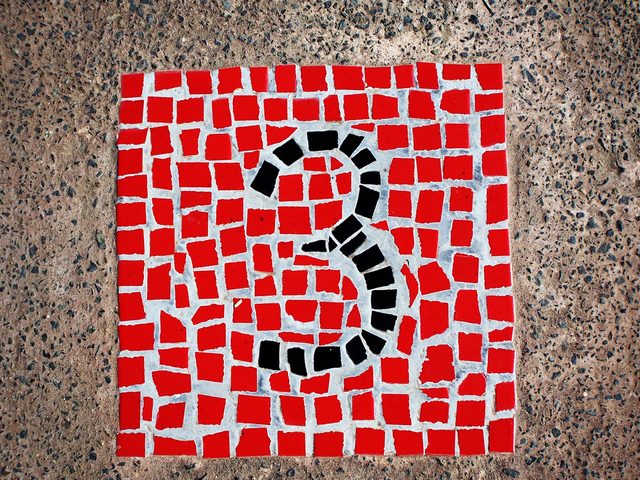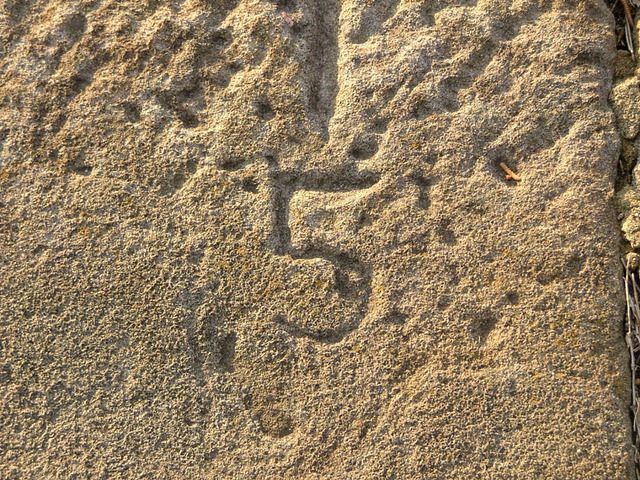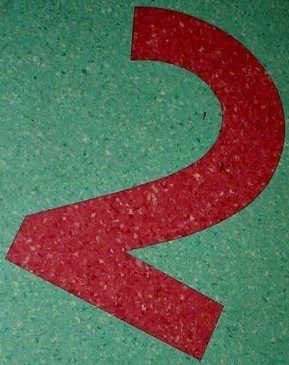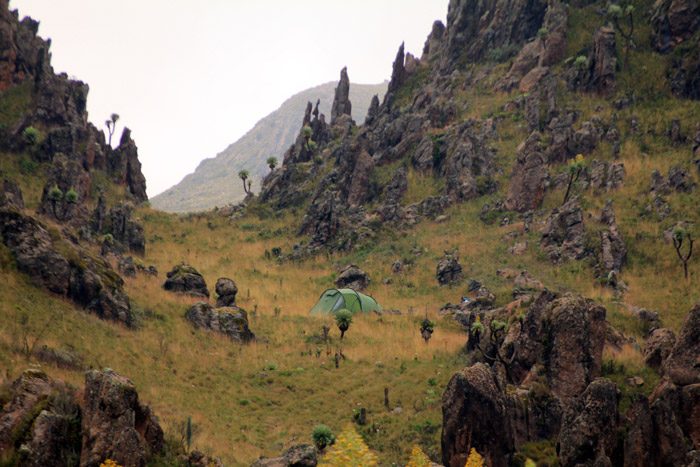-
The 3 species of zebra are Grevy zebra, mountain zebra and plains zebra. In 1882, the then Emperor of Abyssinia presented a zebra to the President of France whose name was Jules Grevy. This led to the coining of the word Grevy zebra. Mountain zebras usually take a dust bath daily. They have vertical stripes on the torso and neck as well as horizontal ones on the haunches. Plains zebra is the most widespread equine on earth. While in some parts they live a sedentary lifestyle, in other regions like Serengeti they migrate in response to the availability of water.
-
Various theories have been put forward as to the function of zebra stripes. According to a school of thought, its equine ancestor was striped, but they lost it during the evolution. Zebra’s black and white stripes remain a mystery to science even today because they seem out of place in the bush. Zoologists have yet to unravel the mysteries behind its signature striped suit. Scientists are not sure why zebras have not blended in with the browns and reds or why they have stripes. There are many theories and counter-theories to this riddle. Let us examine 2 of such theories.
-
Travel Through The Savannahs Of Kenya To Get To Know The Zebras
-
The role of zebra stripes has been an interest for 150 years. It has drawn many hypotheses. They include confusion of predators, camouflage, signalling to conspecifics and avoidance of flies. Regarding confusion of predators, these striped animals do not have the sort of pattern that aids in confusion. Regarding camouflage, zebra stripes are not easy for lions and hyenas to resolve at any great distance. Regarding social benefits, patterns of association and rates of grooming are no greater in striped mammals than in unstriped mammals. However, there is a consensus that the its role is to thwart attack from flies.
-
Soon after David Sheldrick’s death in 1977, Dr. Dame Daphne Sheldrick founded Sheldrick trust in memory of her late husband that became the most remarkable elephant orphanage in Kenya. It has become the center for information on elephants. Through the Orphans project, the Sheldrick wildlife trust saves the lives of orphaned elephants. Calves who are orphaned due to brutal ivory trade and habitat loss are brought here from all over Kenya. They receive extremely specialized treatment and personal care from highly dedicated staff. After rehabilitation, they are ultimately released back into the wild where they are reintroduced to wild herds.
-
The intention of establishing the National Museum of Kenya with its 29 regional museums was to bring museums closer to people. However, unfortunately, the museum visitors in Kenya have been on the decline and have become passive consumers instead of engaging as participants. It is necessary therefore to develop advanced forms of participation in building museums in Kenya to remain relevant by making the users central. The incompatibility between current museum practices and the needs of people begs for research. Having identified this, this research was carried out to explore means by which museums in Kenya can work with stakeholders.
-
The ostrich is the largest bird in the world with a male ostrich growing around 2 meters tall. An average ostrich weighs around 200lb or 100kg and measures 7-9ft in length. From head to toe. Hence, it is too heavy to fly and remains a flightless bird. But the flightless ostrich has the biggest eye of any animal. It measures 5cm across the face, allowing them to see predators at very long distances. However, the 3 most amusing characteristics of ostriches are that they are the fastest biped, they swallow large stones and they bury their head in the sand.
-
Kenya supports a rich avifauna. These comprise species from the West African rainforests, the east flank of Africa, the southern tropics, the Horn of Africa, as well as the north-western districts of Kenya. To a large extent, this shows the diversity of the habitat of Kenya, which include semi-arid scrubs, deserts, lowlands, montane forests, large soda lakes, freshwater lakes, a long coastline as well as alpine meadows. Besides, Kenya is located on a major migration route for waterfowl, passerines, and raptors from Europe, Russia as well as the Middle East. The country is at the intersection of these biogeographical areas.
-
One of the components of a wildlife safari package to Kenya is a well-deserved visit to Lake Nakuru. The well famous and beautiful Lake Nakuru of Kenya is situated in Nakuru national park in the province of rift valley. Freshwater streams from the mountain surround this magnificent Lake Nakuru. The long-necked and long-legged flamingos populate these streams as they bathe and frolic in the mountain water. The lake is undoubtedly a flamingo par excellence. An incredible visible feature of the lake are undoubtedly the 2 colors associated with flamingos in Kenya. They are the pink color and the aqua color.
-
Kenya tourism is a substantial contributor to the economy accounting for 12% of total employment and 27% of foreign exchange. It has attracted massive government and foreign investments with major effects on other sectors. There were 2.035 million arrivals in 2019 from all over the world and was projected to grow by 10%. But COVID-19 with its impact on travel has brought the industry to a halt. Whilst tourism has proven to be resilient to terrorism, recession, violence, pandemics, and natural disasters, none of these events has had such an impact on the economy, especially the tourism industry, as COVID-19.
-
Kenya tourism is a substantial contributor to the economy accounting for 12% of total employment and 27% of foreign exchange. It has attracted massive government and foreign investments with major effects on other sectors. There were 2.035 million arrivals in 2019 from all over the world and was projected to grow by 10%. But COVIS-19 with its impact on travel has brought the industry to a halt. Whilst tourism has proven to be resilient to terrorism, recession, violence, pandemics, and natural disasters, none of these events has had such an impact on the economy, especially the tourism industry, as COVID-19.
-
A balloon safari starts with a pick-up from the lodge at 5 AM and drop-off at the balloon launch site. The ground crew awaits in the recently plowed field. Already, as daylight approaches, the stars are fading. The sun bursts over the mountains and sunlight dances on the hills adorned with the lacy greens. The morning sky streaks with orange and red. The aroma of fresh doughnuts and coffee overwhelms the earthy, dewy smell of the early morning. As you reach there, you will find the ground crew unpacking the large engine. Ballooning is done best during dawn or dusk.
-
It is worth spending a couple of nights at Serena Mountain Lodge. The panorama surrounding the lodge is delightful with their dramatic features. It is set in the dense rainforest zone on the slopes of Mount Kenya within the National Park in Kenya’s Nyeri District, about a three-hour drive and 193 kilometers from Nairobi. The Serena Mountain Lodge has cabin-styled, timber-built rooms with a private balcony and luxury ensuite bathroom overlooking the waterhole. The furnishings of rooms are of indigenous African and wood art, decorated with rugs. The décor echoes the Kikuyu culture, featuring soft lighting and hand-woven wall hangings.
-
Kenya is blessed with two beautiful and majestic mountains that are the icons not only of the country but also of the whole of the African continent. The 2 famous mountains of Kenya are the Mount Kenya, which is Kenya’s highest mountain, and the Aberdare Mountains, which is by now well known for its salient forests and wild animals. Indeed, mountain climbers and experts rate Mount Kenya as the most terrible ice mountain in the world. The Aberdare has two unique safari lodges called the Tree Hotels that are set high in the awning above natural salt licks and waterholes.
-
On the fringes and far outside of Nairobi lies the 3 hidden gems of Kenya. These beautiful cities are Nyahururu, Nanyuki and Tsavo. They deserve a special place in the history of Kenya for its supreme beauty and unmatched mysticism
-
Enjoying Kenya safari in a hot-air balloon is one of the most thrilling experiences. It gives a bird’s eye view of the vast savannahs of the game parks in Kenya. Witnessing the feral beasts of the earth against the backdrop of the tranquility of the savannahs from the vantage point of view is worth every penny. Let’s have a look at the 5 things to expect during a balloon safari ie. what happens before, during and after a balloon ride because it is rather important to know what you get out of it when you pay for a balloon safari.
-
Enjoying Kenya safari in a hot-air balloon is one of the most thrilling experiences. It gives a bird’s eye view of the vast savannahs of the game parks in Kenya. Witnessing the feral beasts of the earth against the backdrop of the tranquility of the savannahs from the vantage point of view is worth every penny. Balloon flights operate throughout the year. But the optimum time to do a balloon safari in the Mara is when millions of animals navigate the Kenyan plains during the annual wildebeest migration. It happens from July to September and in the month of November.
-
It was Major Sherbrooke Walker who erected the Treetops Hotel on a fig tree in 1932 at the request of Lady Bettie Fielding, his wife. She wanted a tree house like the one in the play Peter Pan. It was built near a wallow where wild beasts came for salt lick and refreshment. The base before the visits to Treetops is the Outspan Hotel, an ideal getaway with great ambience, verdant green lawns and vibrant gardens where peacocks roam at will. The hotel is set in Kenya’s coffee and tea growing highlands in the green grounds near the Karuru Falls.

